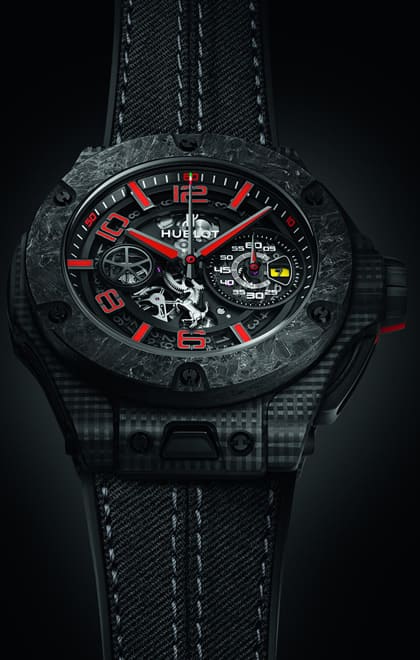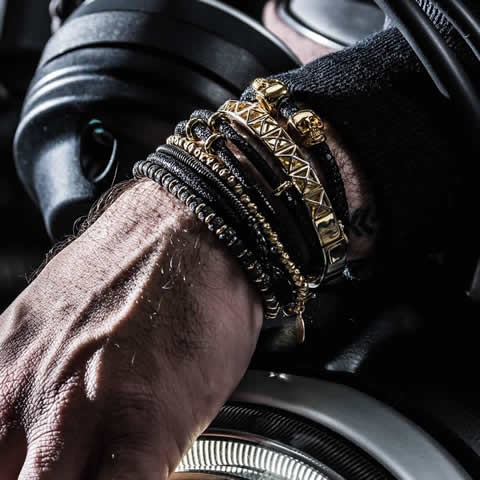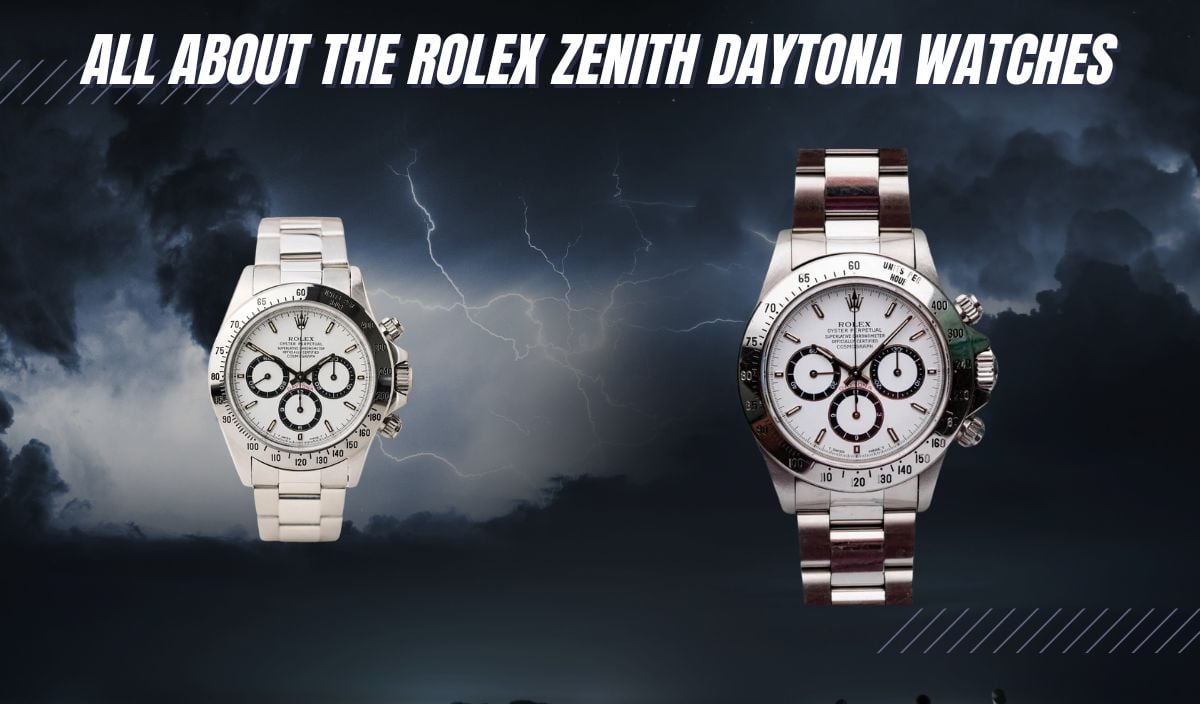
All About Rolex Zenith Daytona Watches (And How to Spot Them)
Some models rise above the rest in the horological world to achieve iconic status. Born from an unlikely collaboration between Rolex and Zenith, the Zenith-powered Daytona 165xx series is a legendary branch in the Daytona family that marked a significant evolution in the model’s history.
Its commercial success is partly due to its development into a “brand within a brand”. Dedicated Daytona collectors often set themselves apart from the broader group of Rolex enthusiasts. A ridiculous example of this phenomenon was demonstrated by the record-setting sale of Paul Newman’s own Rolex Daytona to an anonymous bidder for over $17 million.
But that watch was from the first generation of Daytonas. Soon after, the brand was completely reformed by the Zenith-powered second generation, which brought many significant upgrades besides its movement. The rarity of the short production run and the iconic characteristics described within this article made the Rolex Zenith Daytona the ultimate racing icon.
About the Rolex Zenith Daytona
This particular model marks a significant turning point in the history of the Daytona series. It marks the first Rolex Daytona model that featured an automatic movement instead of the original hand-winding one. And this movement was the famous Zenith El-Primero movement.
This caliber wasn’t made in-house by Rolex; however, it had heavy modifications that distinguished it from the original construction. Over the Zenith Daytona’s limited production run, a stainless steel, an 18k yellow gold version, and a combination of both were also featured.
History of the Rolex Zenith Daytona
Rolex’s Daytona collection, named after the famous Daytona Beach raceway in Florida, was launched in 1963. It quickly gained acclaim for its precision and reliability in motorsport timing.
The first generation of Rolex’s racing line had a hand-winding mechanical movement when it was manufactured until one day, in 1988, the brand released the very first automatic Daytona. It was powered by a modified Zenith El-Primero movement.
Rolex drastically altered the original high-beat El Primero, reducing its frequency from 36,000 vibrations per hour to a more standard 28,800. Together with some additional changes, this collaboration resulted in the Rolex Calibre 4030.
The watch created has started a new avalanche of desirability and popularity for the Daytona collection. The Zenith movements were only featured until 2000, at which point Rolex unveiled its in-house caliber 4130. New Daytona models from then on only featured the caliber 4130.
The Rolex Zenith Daytona Caliber 4030
The Zenith “El Primero” movement was known for its high-beat frequency, date function, and integrated automatic chronograph design. Then Rolex came along and chose to use this movement for the Daytona after making several changes to it:
Beat Rate
As mentioned earlier, Rolex reduced the frequency from 36,000 vibrations per hour to 28,800 vibrations per hour. Thus, they have managed to increase the longevity and reliability of the movement.
Date Function Removal
The Zenith El Primero movement originally included a date function. Rolex removed this feature to keep Daytona’s design clean and focused on the chronograph function.
Chronograph Modification
Rolex completely redesigned the chronograph mechanism. They aimed to increase the durability of the watch while simplifying the user experience with these changes.
The original El Primero used a lateral clutch engagement system for the chronograph function (Imagine two gears sitting side by side on a table. When you want to engage the chronograph, you push one gear into the other, meshing their teeth together. This starts the chronograph mechanism).
In contrast, Rolex modified it to a vertical clutch system (imagine stacking those two gears one on top of the other, so when you engage the chronograph, you’re pressing down the top gear onto the bottom one. This system generally allows for a smoother start without the jump seen in lateral clutches).
This change reduced wear on the mechanism when the chronograph was engaged for extended periods of time and improved its accuracy at the same time.
Balance and Hairspring
Rolex replaced the Zenith’s balance wheel (the wheel that oscillates back and forth, it’s responsible for keeping time in the watch) and hairspring (makes the balance wheel swing back and forth at a consistent rate) with its own, featuring Microstella regulating nuts (adjustable weights on the balance wheel that Rolex uses to fine-tune the accuracy of the watch) and a Breguet overcoil (a specific design of the hairspring, that helps the balance wheel swing more consistently and improves the watch’s accuracy), respectively. This allowed for more accurate adjustments and better resistance to temperature variations and shocks.
Escapement
The escapement in a watch transfers energy to the timekeeping element (the balance wheel) and ensures the timepiece keeps time accurately. It’s the heart of the watch. It involves two main components: the escape wheel (toothed wheel driven by the watch’s mainspring) and the pallet fork (a lever with two jeweled ‘pallets’ that interact with the teeth of the escape wheel).
In the original Zenith El Primero movement, a ‘Swiss lever’ escapement was used. However, Rolex decided to replace this with their own in-house design, known as the ‘Chronergy’ escapement, when they adopted the El Primero movement for the Daytona. The Chronergy escapement is an improved version of the Swiss lever escapement with modifications to the escape wheel and pallet fork that increase efficiency and reduce energy consumption.
Finishing and Decoration
When Rolex acquired the Zenith El Primero movements to use in their Daytona watches, they applied their unique aesthetic standards before putting them into production, such as Engraving, Polishing, and Gold Plating.
These modifications transformed the high-beat El Primero into the Caliber 4030, a movement that matched Rolex’s standards at the time. They’ve managed to improve the precision, reliability, and longevity of the movement before putting it onto the production line. It was these significant changes that helped elevate the Daytona’s status.
Caliber 4030 vs Caliber 4130: What Changes Did Rolex Make For Its In-House Movement?
The Caliber 4130 is the first movement entirely developed and manufactured in-house by Rolex, which replaced the Zenith-based Caliber 4030. It features a longer power reserve of 72 hours. It also has a similar vertical clutch mechanism to its predecessor for the chronograph function.
However, the 4130 was the first Rolex caliber to introduce the brand’s “Parachrom Bleu” hairspring (that was unaffected by magnetic fields and was much more shock-resistant).
Rolex Zenith Daytona Watch Models
Rolex Zenith Daytona 16520
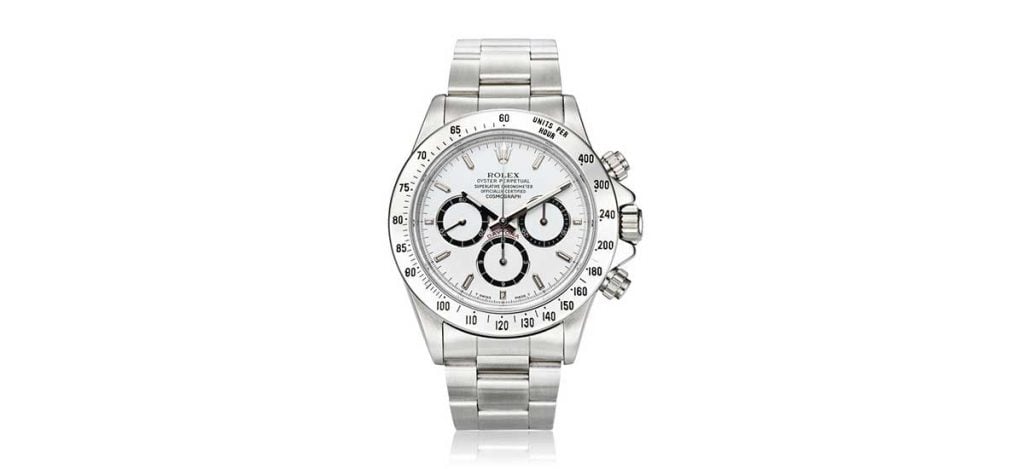
The 16520 is the stainless steel Zenith Daytona. Its material provides a sporty aesthetic over the other two models. It launched with either a black or a white dial option. Later on, a silver dial and an exotic “Daytona Paul Newman” dial also became available. The bezel on this specific watch is made out of stainless steel with an engraved tachymeter scale.
Rolex Zenith Daytona 16523
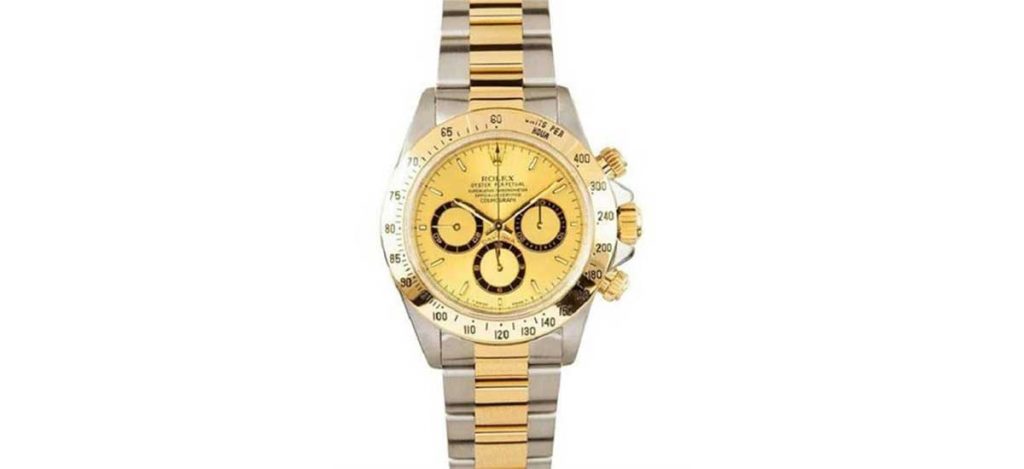
The 16520 is a combination of the stainless steel and the yellow-gold Zenith Daytona. The case and bracelet have a two-tone design, with the central links of the bracelet in gold. It featured the exact same dial options as the 16520 stainless steel model. The bezel on this specific watch is made out of 18k yellow gold, with a similar engraved tachymeter scale.
Rolex Zenith Daytona 16528
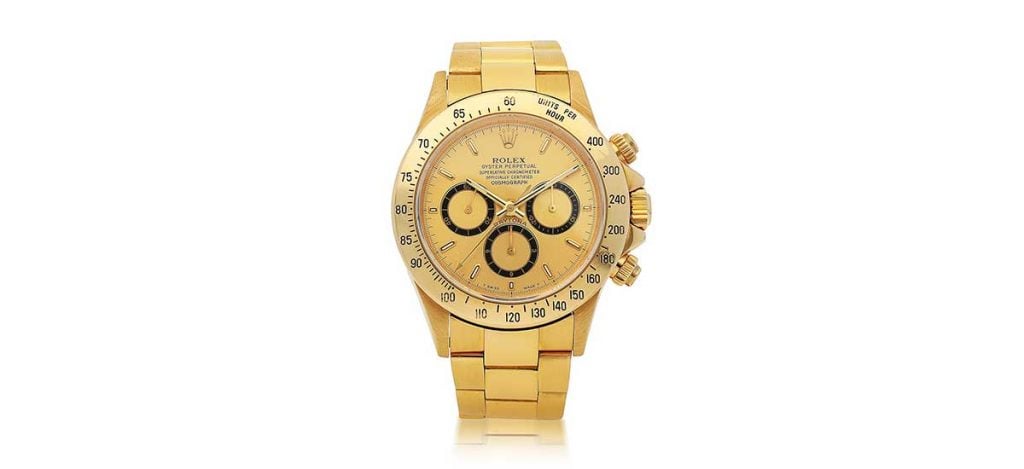
The 16520 is the 18k yellow gold Zenith Daytona. Its material gives it a luxurious and prestigious appearance. It featured the exact same dial options as the other two models. The bezel on this specific watch is also made of 18k yellow gold.
What’s Different About the Rolex Zenith Daytona Dial?
Both the Caliber 4030 and the Caliber 4130 Daytona models have a trio of subsidiary dials. Although these dials are positioned in a similar way, they line up in different order at the 3, 6, and 9-hour mark.
The Caliber 4130 models have the running seconds dial at 6 o’clock, while the 12-hour counter at the 9 o’clock position. The Zenith Daytona models have it switched, meaning the 12-hour counter at 6 o’clock and the running seconds dial at the 9 o’clock position.
Both watches have their 30-minute counter at the 6 o’clock position. These subsidiary dials sit closer to each other on the Zenith-powered model, leaning more to the center compared to later models.
The Zenith Daytona also has a thinner set of luminated markers, making it harder to read in low-light conditions. Finally, the ref. 16520 stainless-steel version of the Zenith-powered Daytona uses a different color for its subdial rings on both the black and the white dial version.
How Difficult Is It to Get Your Hands on a Rolex Zenith Daytona?
This watch model has developed a significant following among collectors, and as it ages, interest in it only continues to grow. The Daytona, in general, is often described as a brand within a brand, with its own dedicated group of collectors.
The Zenith-powered Daytona is no exception, and it has appreciated steeply in value over time, especially when new versions of the Rolex Daytona are released. Introduced as the first self-winding chronograph from Rolex, it marked a significant leap in the brand’s technical prowess.
This watch model also has a reputation for being hard to get a hold of from authorized dealers. Because of this, obtaining one has always been something of a “dark art.”
In addition, the Zenith-powered Daytona has various significant variations in the dial and bezels, which makes it even more appealing to collectors. People who dedicate their lives to obtaining the most iconic watches will always appreciate unique details on a timepiece, such as the different versions of the Zenith Daytona from MK1 to MK5.
To conclude, it’s very difficult to get your hands on a Zenith-powered Rolex Daytona. As its market price keeps growing over time, your competition will not only consist of Rolex enthusiasts but big-money investors as well.
Conclusion
While the Zenith Daytonas are no longer in production, their influence on the horological world remains unchanged. Their legacy extends further than the mechanical watch industry. These timepieces managed to form a worldwide community of racing watch enthusiasts within the Rolex brand. As the watch is likely to keep appreciating in the future, investors and motorsport fans will retain constant competition to get their hands on one.
About Exquisite Timepieces
Established in 1998, Exquisite Timepieces is your one-stop shop for all things luxury watches! We are an authorized dealer for 60+ luxury watch brands including Omega, Hublot, Seiko, & Longines! We are proud to showcase one of the world’s largest pre-owned watch collections, including renowned brands like Rolex and Patek Philippe. Check out our brand new watch arrivals here and popular pre-owned listings here.


